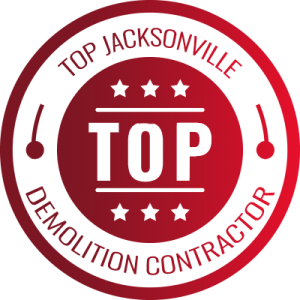



Starting a commercial demolition job isn’t just about knocking down walls and hauling off debris. Buildings, especially older ones in Jacksonville, can hide serious issues beneath the surface. What looks stable from the outside might be holding on by a thread inside. Skipping over early inspections makes it easy to miss those warning signs until it’s too late.
Structural issues that are buried deep inside a building can turn a planned demolition into a risky situation. These weak spots might not show themselves until you’re already mid-process, which can lead to delays and unexpected costs. That’s why it’s smart to make sure any weak points are found early. A solid plan begins with knowing exactly what you’re dealing with before heavy equipment comes anywhere near the building.
Signs Of Structural Weakness
A lot of older commercial buildings in Jacksonville have been standing for decades. Over that time, they’ve been patched, renovated, and sometimes neglected. What’s left behind isn’t always obvious just by walking through. Some weaknesses are sitting behind walls or under flooring, waiting to unravel the minute demolition begins.
Here are a few signs contractors should look out for when evaluating whether a structure may be hiding trouble:
– Cracks that run across walls, especially near corners, windows, or doors
– Uneven or soft floors that feel unstable when stepped on
– Beams that look bowed, twisted, or water-stained
– Sloped ceilings or dropped tiles in large office spaces
– Windows or doors that don’t sit square or stick when moving
Each of these might seem small alone but can point to much bigger problems underneath. In an old bank building we assessed, there were only surface cracks visible in the main lobby’s columns. But once we looked deeper, it turned out the support beams had been damaged years earlier by a roof leak that was never properly fixed. That shifted the weight load just enough to make parts of the structure unstable. Without flagging that early, demo work in that area could have gone wrong fast.
Weaknesses like these may not always jump out during a basic walkthrough. That’s why further investigation is always a smart step before demolition officially begins. When you catch early signs like these, it gives enough time to plan around them or fix them so work can move forward safely.
Pre-Demolition Structural Surveys
The sooner a possible weak zone is spotted, the easier it is to adjust the plan. That’s where structural surveys come in. Think of this as your building’s checkup before anything gets touched. It’s a deeper look under the surface, using experience and tools to spot trouble that wouldn’t be obvious on first glance.
A proper survey usually involves a few key steps:
- A visual inspection of all accessible areas by a licensed structural engineer
- Review of building plans and renovation history where available
- Checking for signs of shifting, rot, or corrosion in beams, load-bearing walls, and key supports
- Testing or probing around known problem areas such as water-damaged spots or previous renovations
- Marking areas of concern to change or reinforce during the actual demolition
Once this is done, all the findings help build a plan that keeps workers safe and the process smooth. These surveys are especially useful in Jacksonville where many commercial spaces have been adapted over the years. What used to be a shipping warehouse might now be a retail showroom, with added stories, removed walls, or crowded HVAC systems that all impact its stability.
Engineers and inspectors play a big part here. They know how forces move through a structure, and they’re trained to spot weak links that might not seem like big deals on their own. Their input shapes the timing, method, and gear choice for the demo team. Without it, you’re working with guesswork, which no one wants when you’re taking down a 3-story building in a busy area.
Importance Of Early Detection
Skipping an early check for structural problems can lead to a long list of headaches during and after demolition. A building might look stable on the outside but be one hit away from a dangerous collapse. That kind of surprise not only brings safety risks but also adds time and cost that weren’t part of the original plan.
Even one missed flaw can force you to halt the work while engineers come back in. It can trigger new permits, bring in emergency repairs, or create unsafe conditions for nearby structures. By spotting weak spots early, you make it easier to manage how and when each part of the building comes down. That makes timelines easier to stick to and keeps heavy equipment moving without backup delays.
Early detection also gives you more control over what needs reinforcing and what can be demolished as-is. For example, if a commercial property has a weakened mid-support beam, you can create a plan that avoids stressing that area until it’s properly supported or isolated. That way, your crew works safer without guessing what might give way next.
Tools And Techniques For Finding Hidden Structural Issues
Relying only on visuals won’t cut it, especially in older Jacksonville structures where problems could be hidden behind decades of remodels. That’s where specialized tools come in. These devices make it easier to peek inside the walls, beams, and floors without tearing them open just yet.
Here are a few tools and methods often used:
– Ground-penetrating radar (GPR) to see inside concrete or soil and find voids, cracks, or hidden utilities
– Infrared thermography to identify moisture, gaps, and insulation problems that could weaken the structure
– Ultrasonic testing that finds internal defects in metal components like support beams or braces
– Fiber optics for reaching tight or enclosed spaces and giving a clear view of what’s behind surface materials
These tools help engineers form a clearer picture of the building’s current condition. That leads to a more accurate demolition strategy, avoids surprises mid-teardown, and protects workers. Used together with experience, these scans catch the types of flaws that cause floors to collapse quicker than expected or lead to shifting walls once other areas start coming down.
Safeguarding The Demolition Process
Once weak points are identified, the next step is deciding how to work around them. Some areas may need to be stabilized before machines move in. Others can be taken down early on purpose to reduce the risk of chain reactions once demo begins. Either way, these decisions need to be laid out in the planning phase.
Here’s how project teams can protect the process:
– Make time for the full structural survey before demo planning begins
– Review engineering notes and get a second opinion if results are unclear
– Adjust the demo scope and sequence to tackle known weak areas first
– Use the right equipment for the job, especially in tight or complex spaces
– Hold a site meeting with all teams to walk through flagged danger zones
These steps help keep things controlled from start to finish. When everyone knows what parts of the building can’t be trusted, they’re better prepared to avoid triggering a big problem. That level of planning is even more important in high-traffic areas or close quarters where adjacent properties sit just a few feet away.
Making Demolition Safer From Day One
Catching and correcting structural issues isn’t about going overboard. It’s about creating a job site that protects everyone involved—crews, neighboring businesses, and passersby. In commercial areas of Jacksonville, that might mean safer sidewalks, fewer delays, and less noise or disruption for nearby retailers and offices.
Good assessments take the guesswork off the table. Everything from how the walls fall to how debris is cleared depends on getting things right before work starts. Skipping that step raises the chances of accidents and can snowball into permit issues or even damage claims when a structure fails unexpectedly. A smooth demolition starts with clear planning based on solid info.
Confidence in the demolition process comes from knowing the risks are dialed down before machines ever hit the site. That peace of mind makes it easier to stay on schedule, stick to the budget, and manage the physical space without unnecessary hazards popping up. It’s a better way to handle Jacksonville’s older commercial structures where building age and usage history can leave some surprises lurking under the surface.
Partner With Elev8 Demolition For Safe And Efficient Demolition Services
If you’re planning a commercial demolition in Jacksonville and need a team that puts safety and preparation first, reach out to Elev8 Demolition. Our experts know how to spot risks early, build solid plans, and carry out demolitions with precision and care. Call us today or visit elev8jax.com to get started.
When you’re ready to start demolition in Jacksonville, make safety and precision your top priorities. Discover how Elev8 Demolition approaches demolition services tailored for commercial properties, and see how our experienced team can manage your project with care and efficiency. Contact us to ensure your commercial property is in the best hands.

